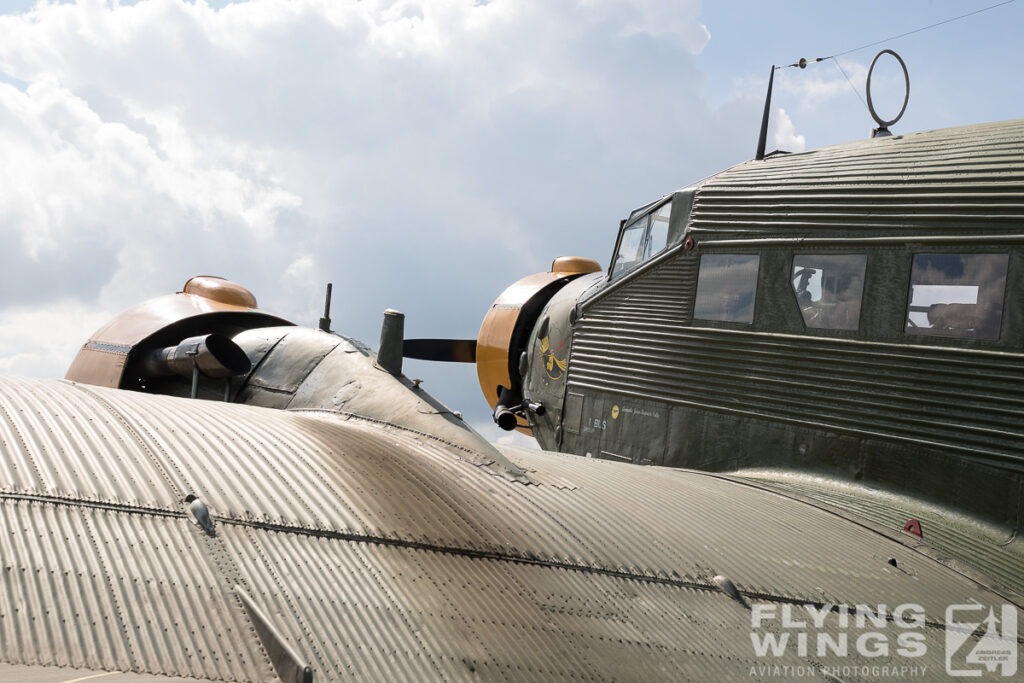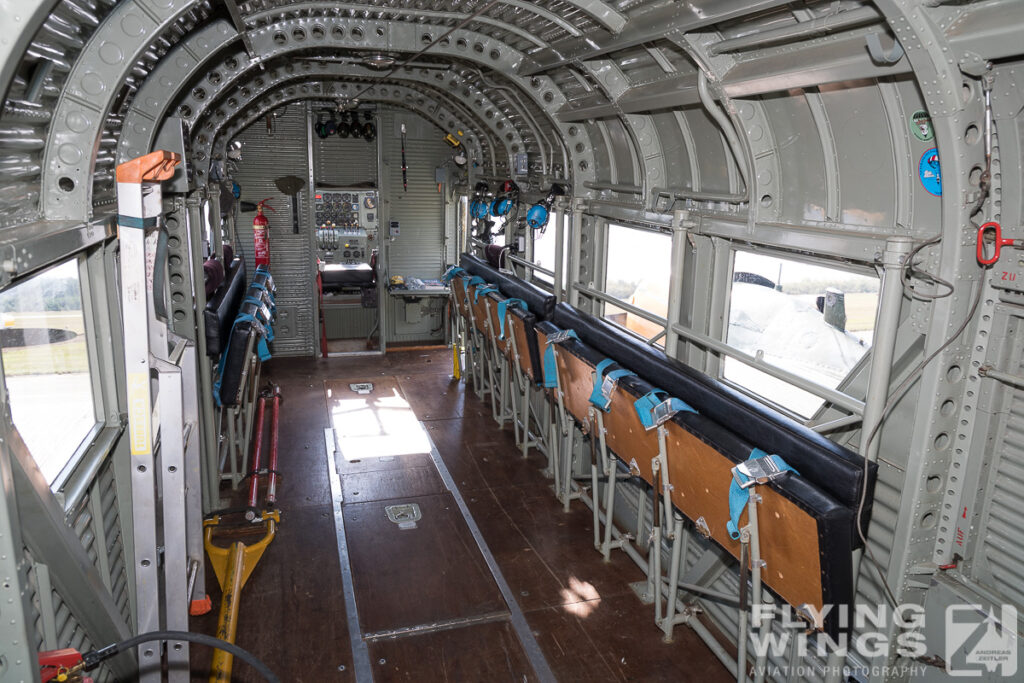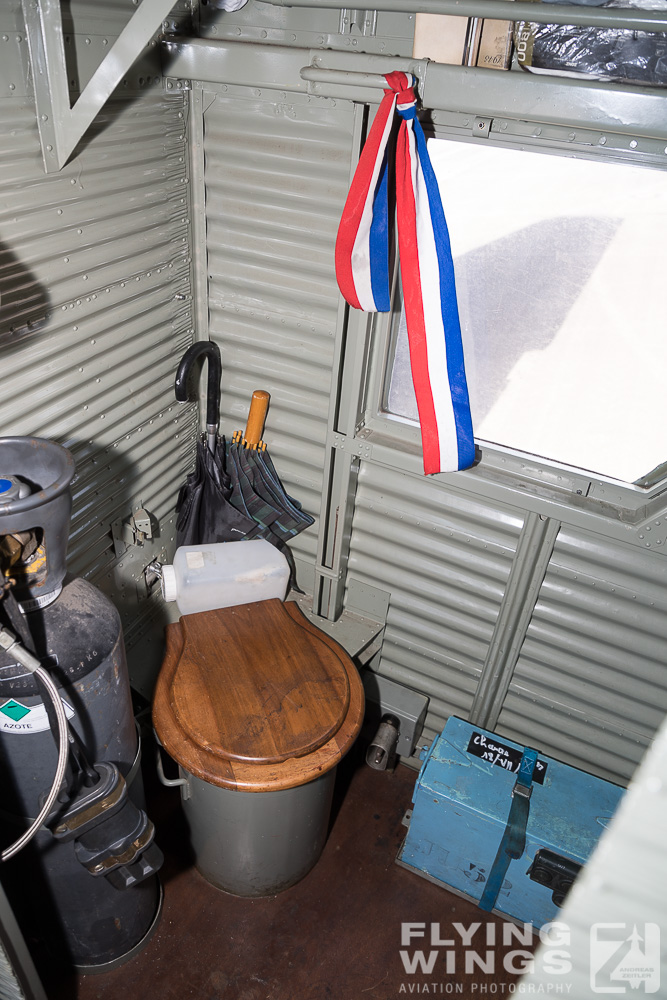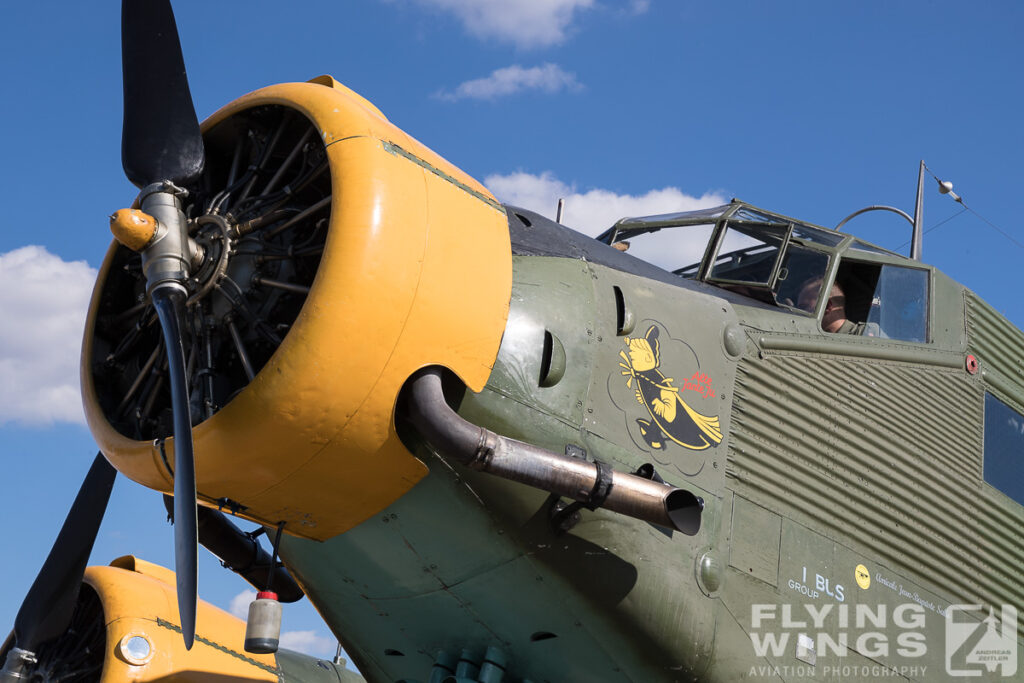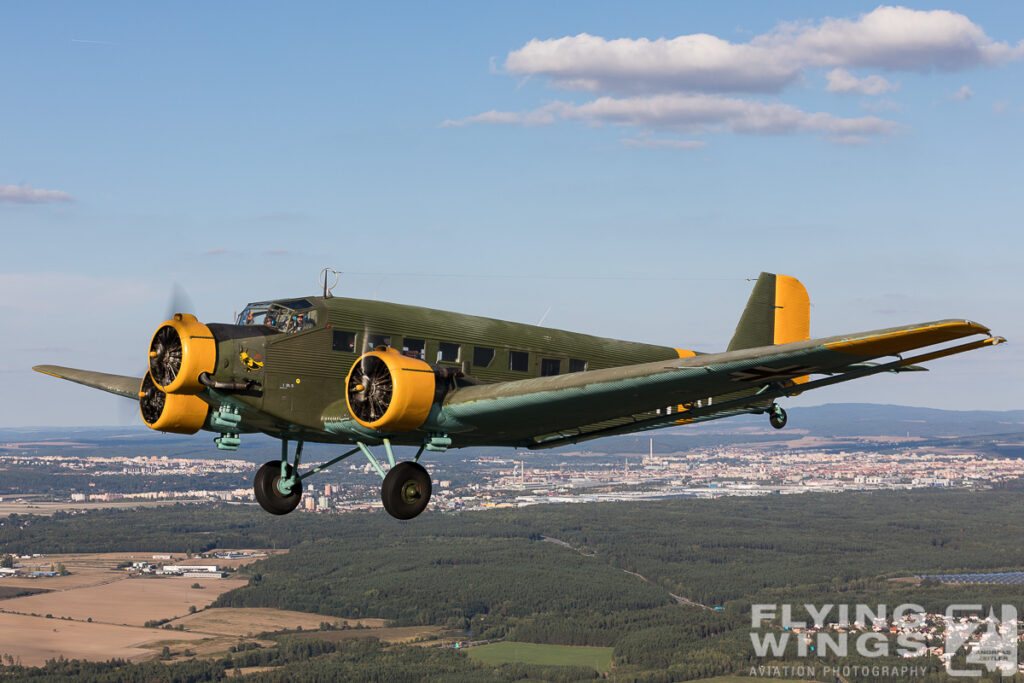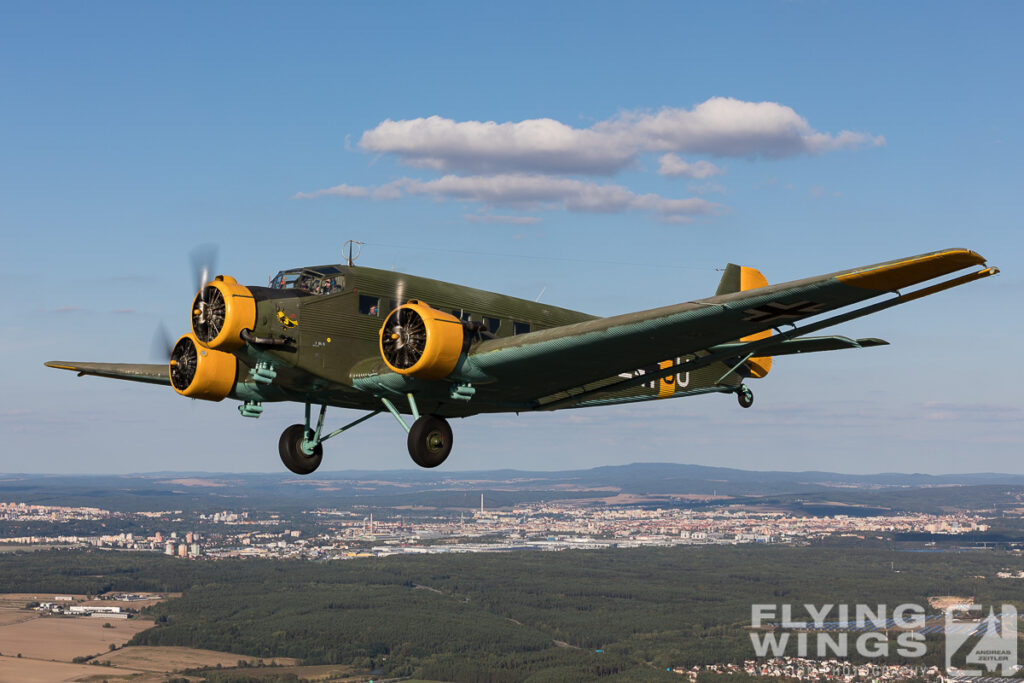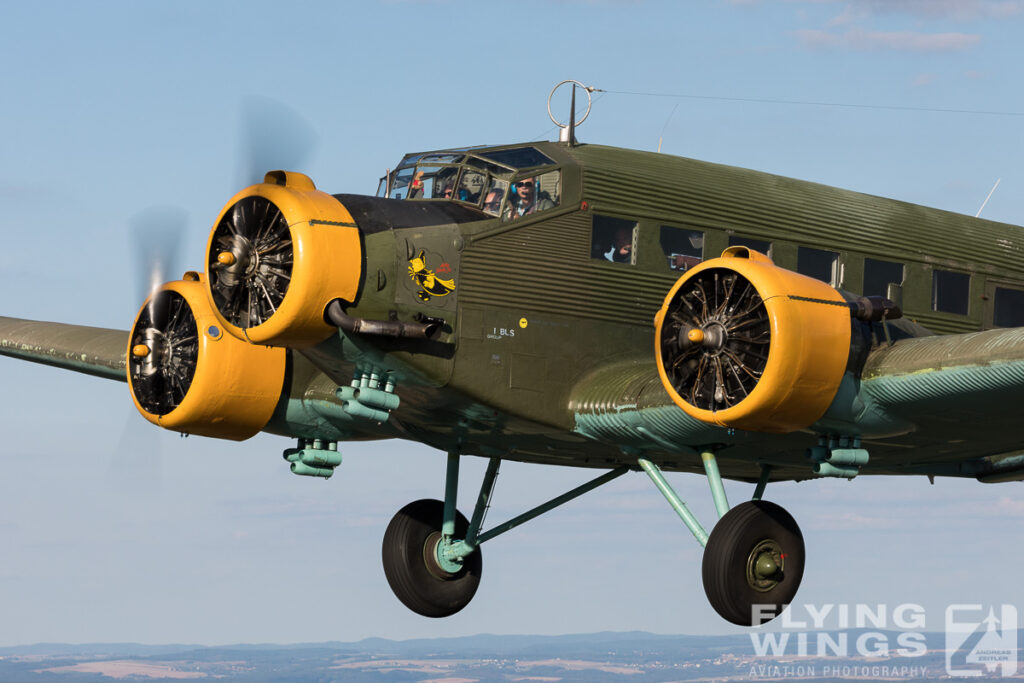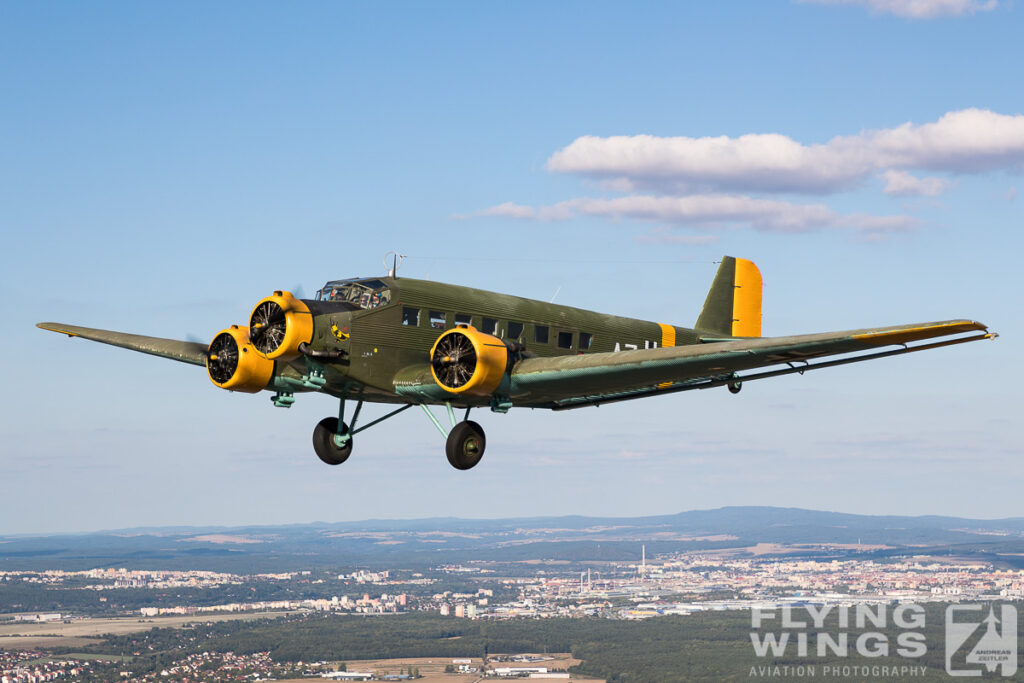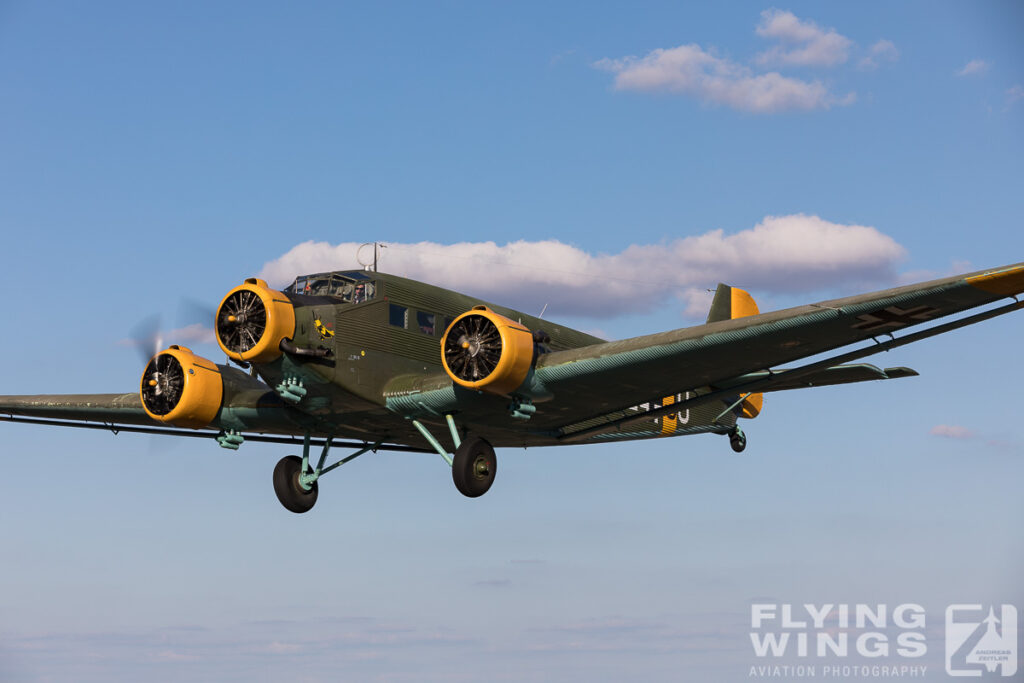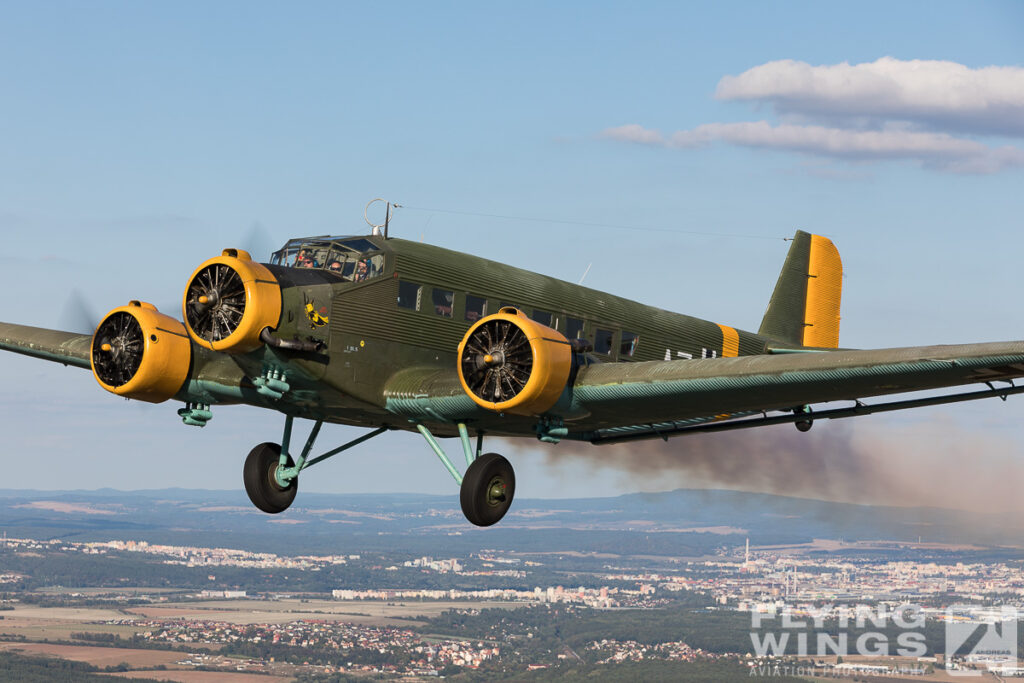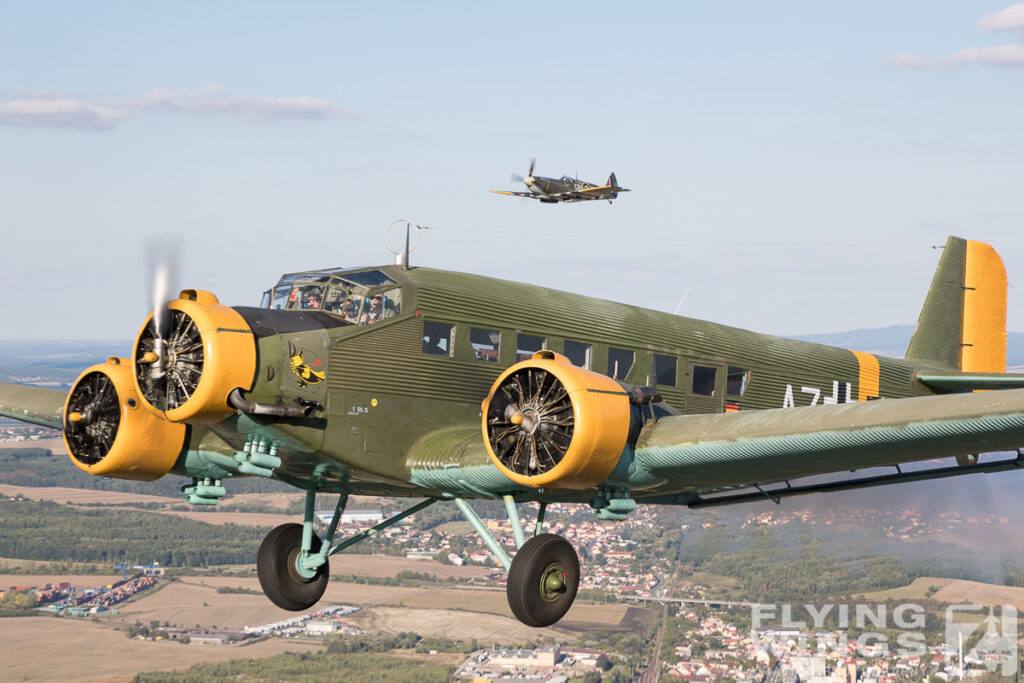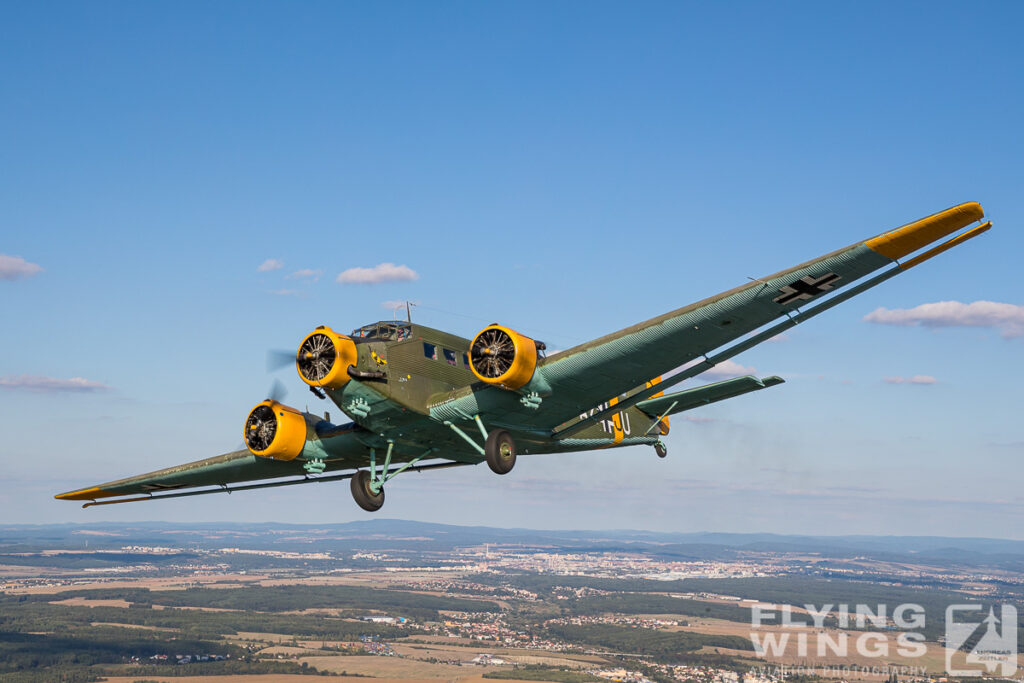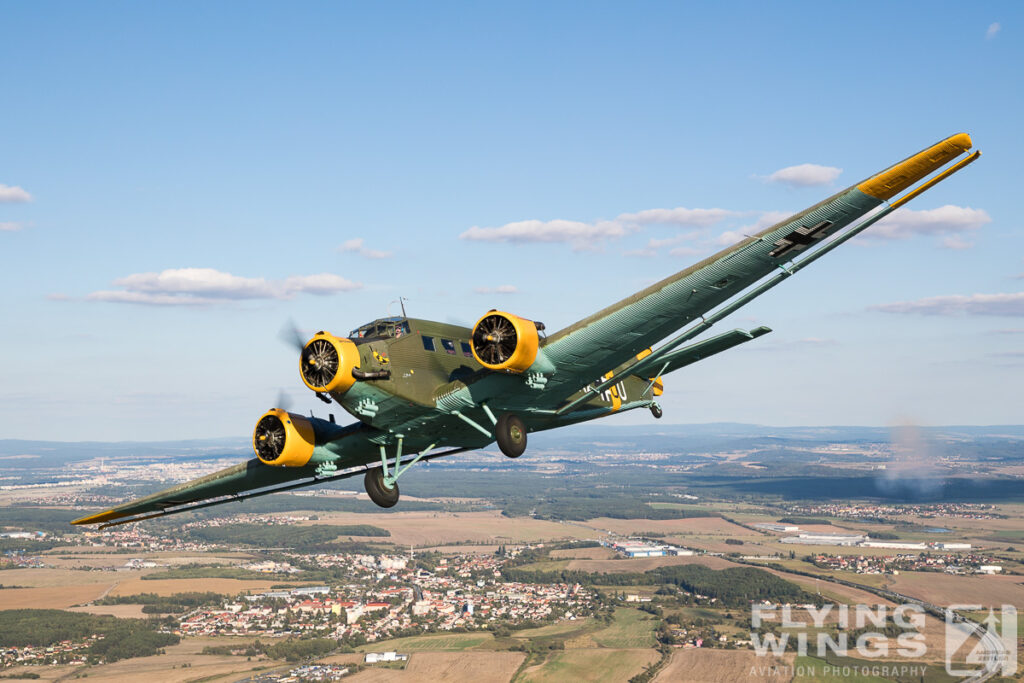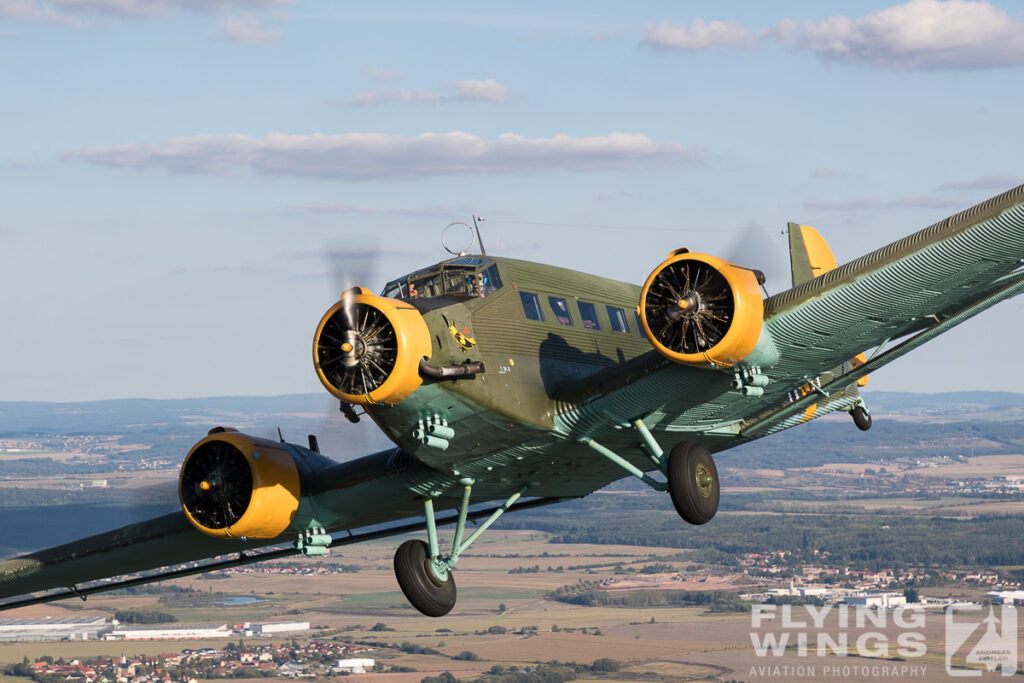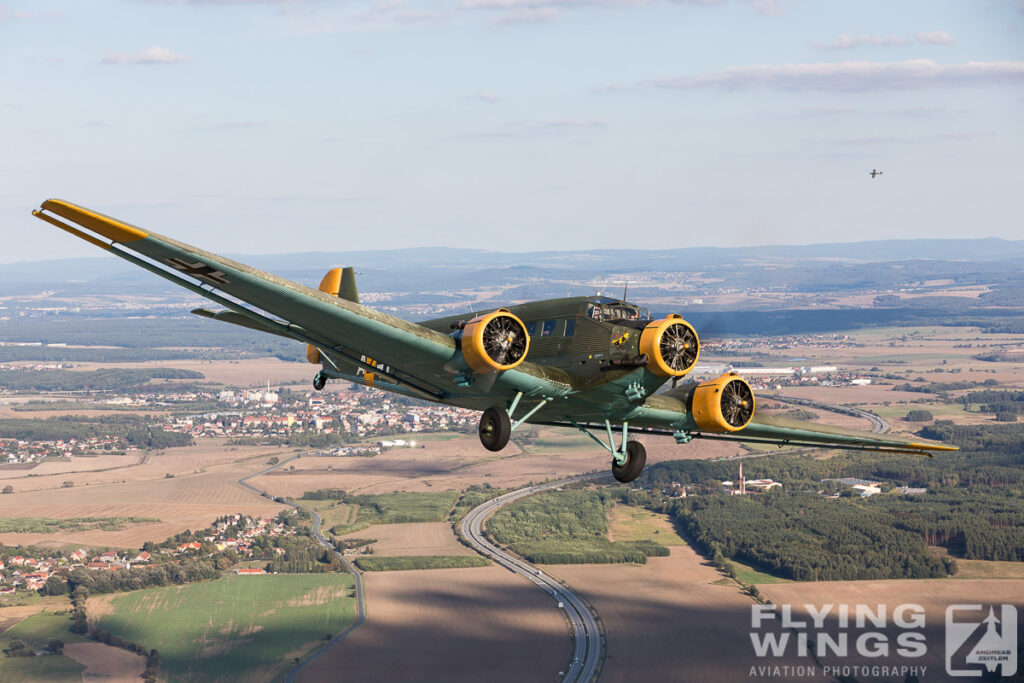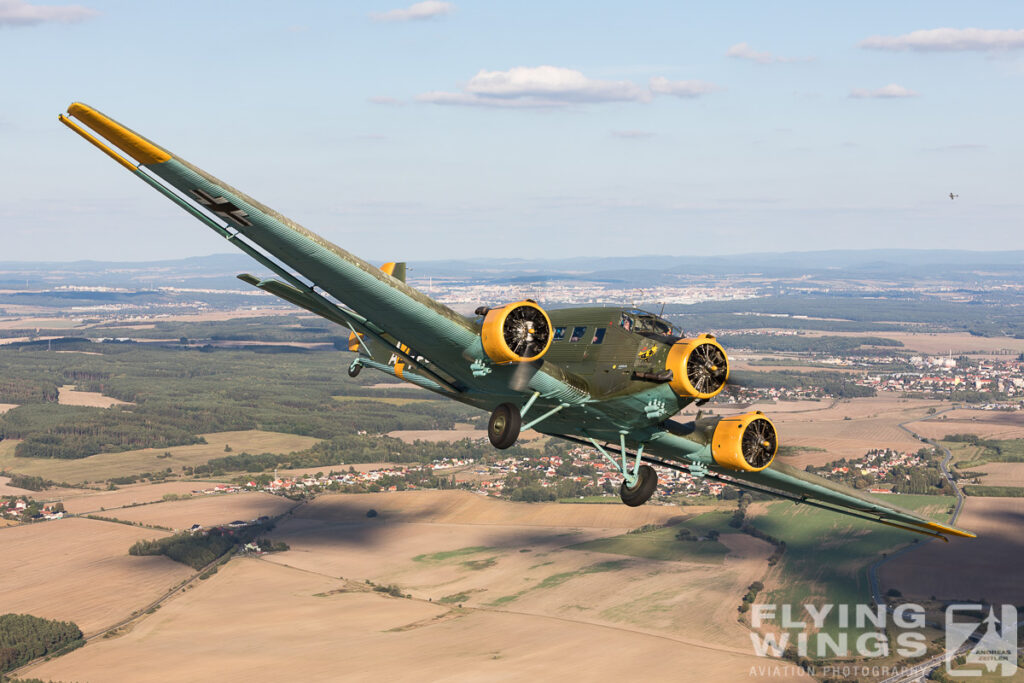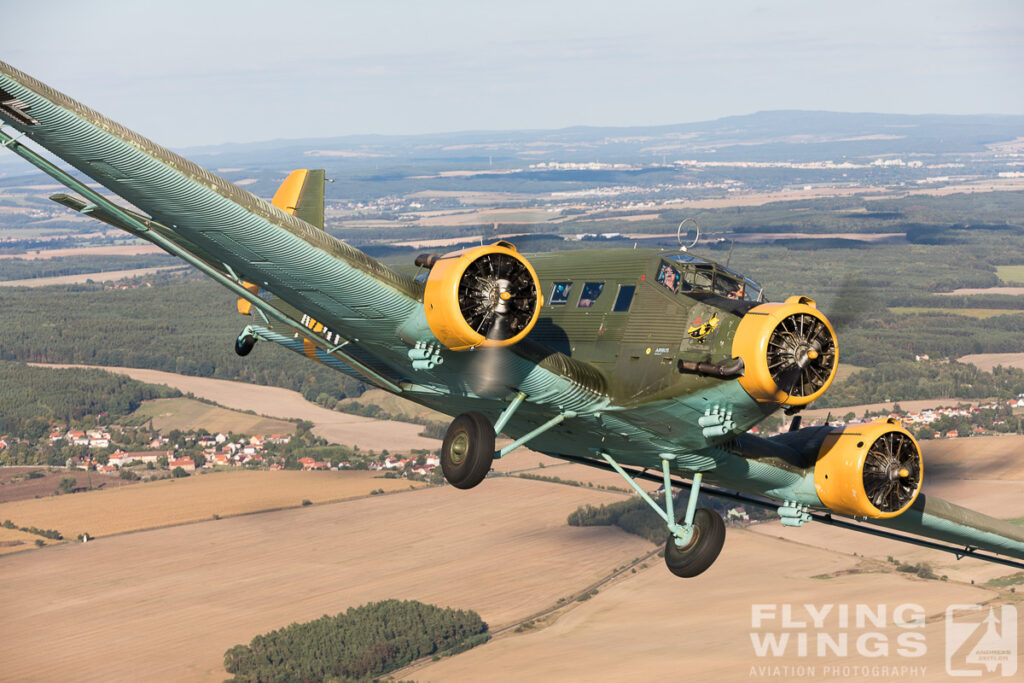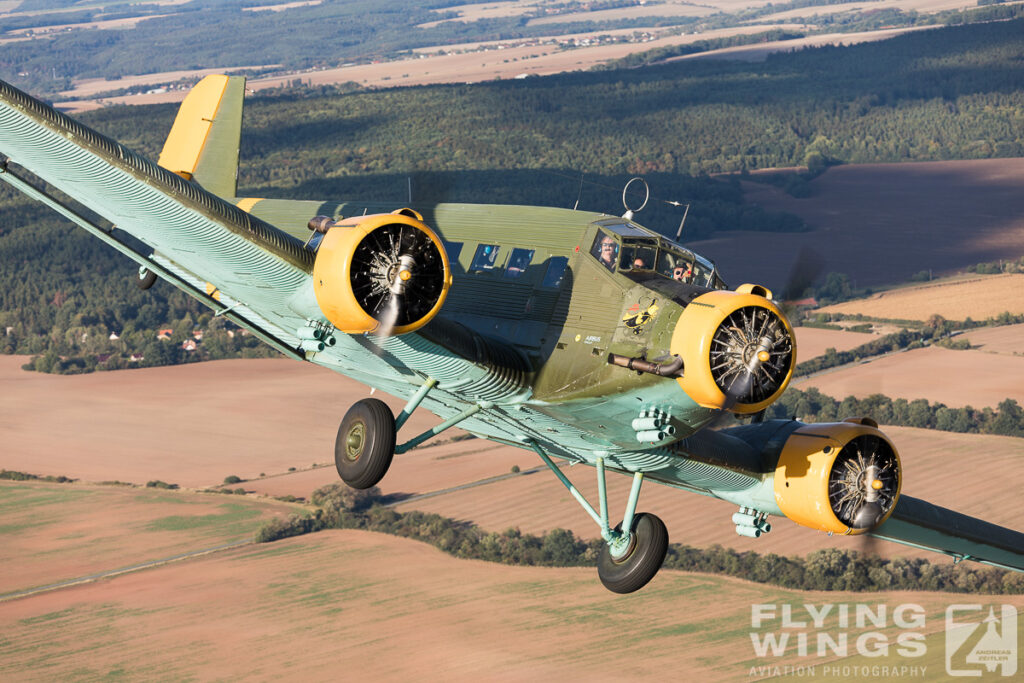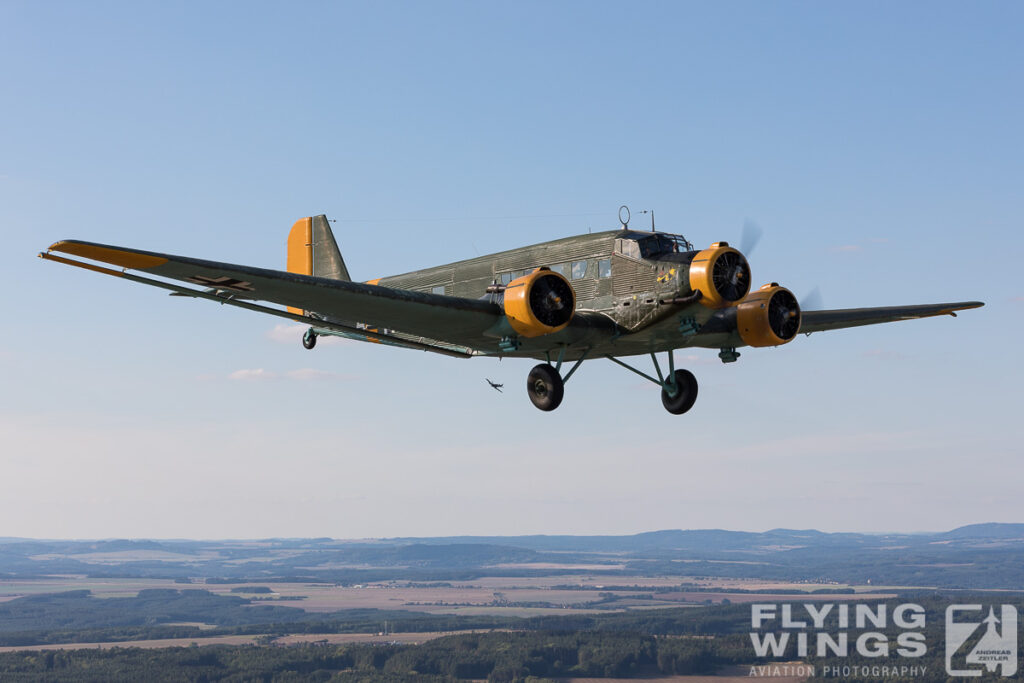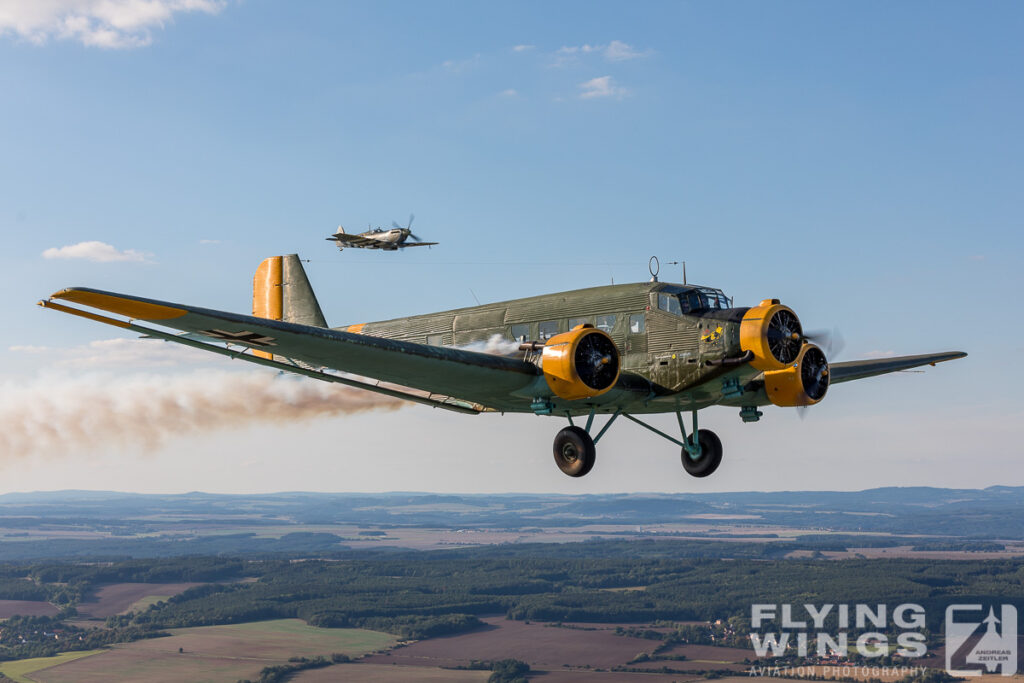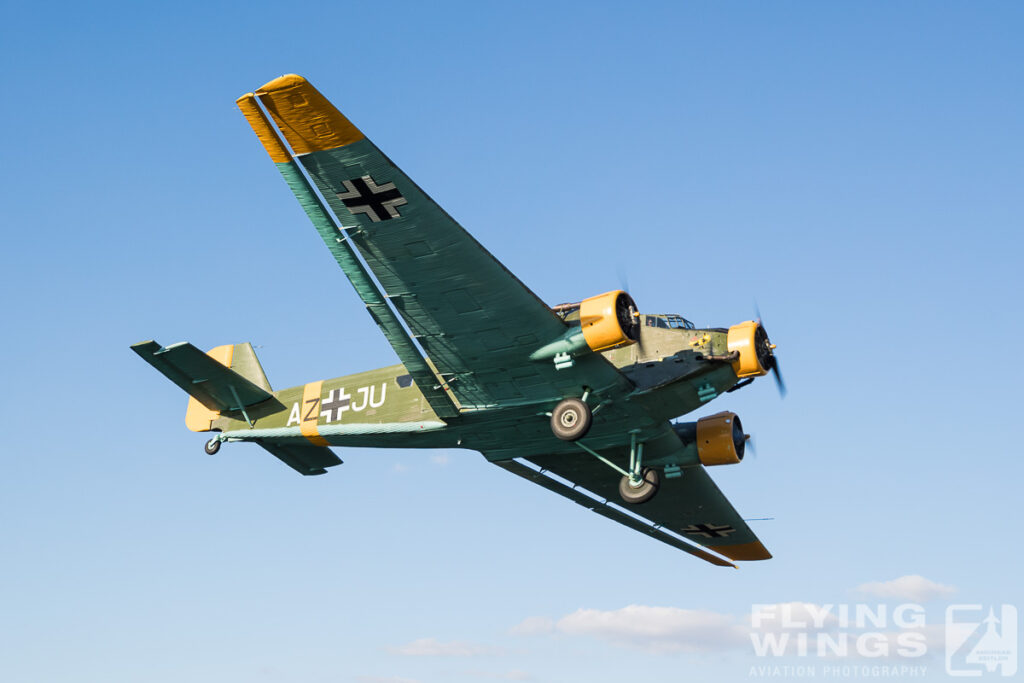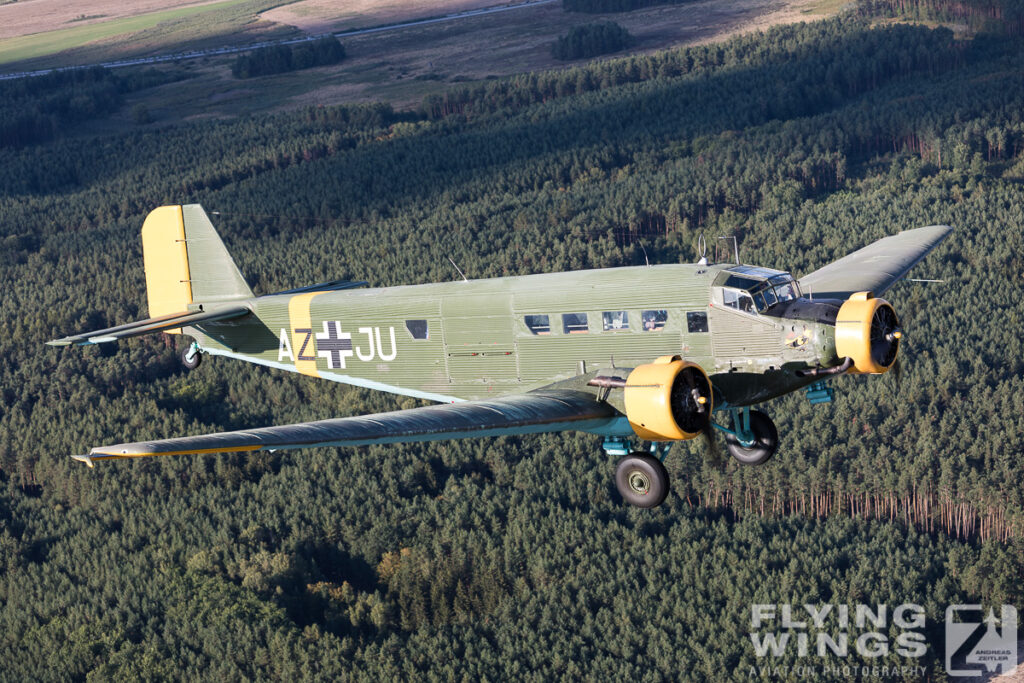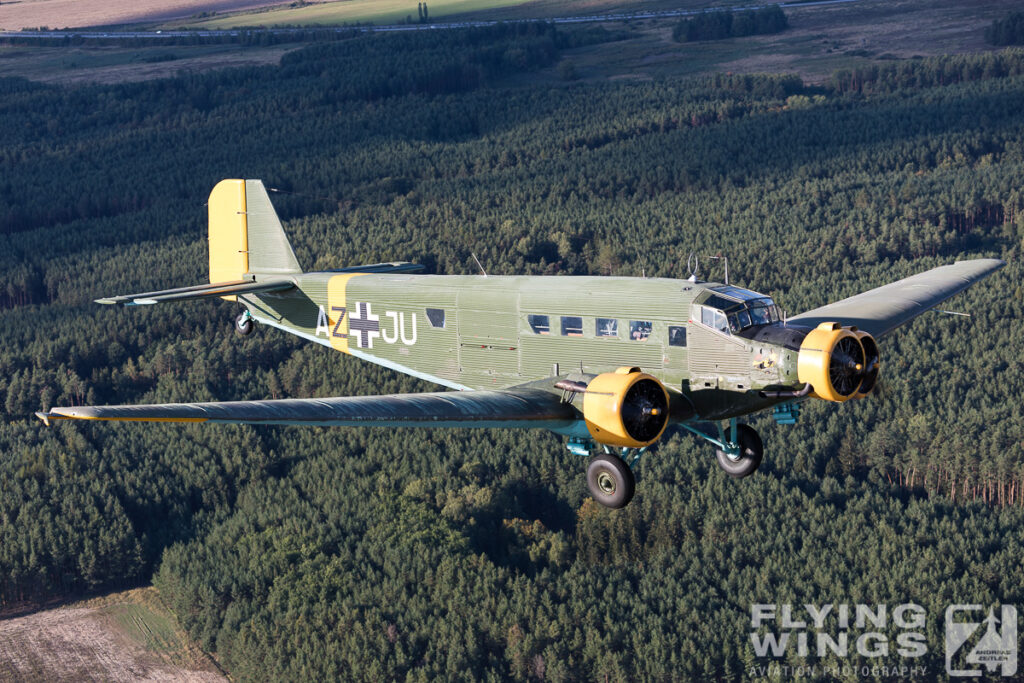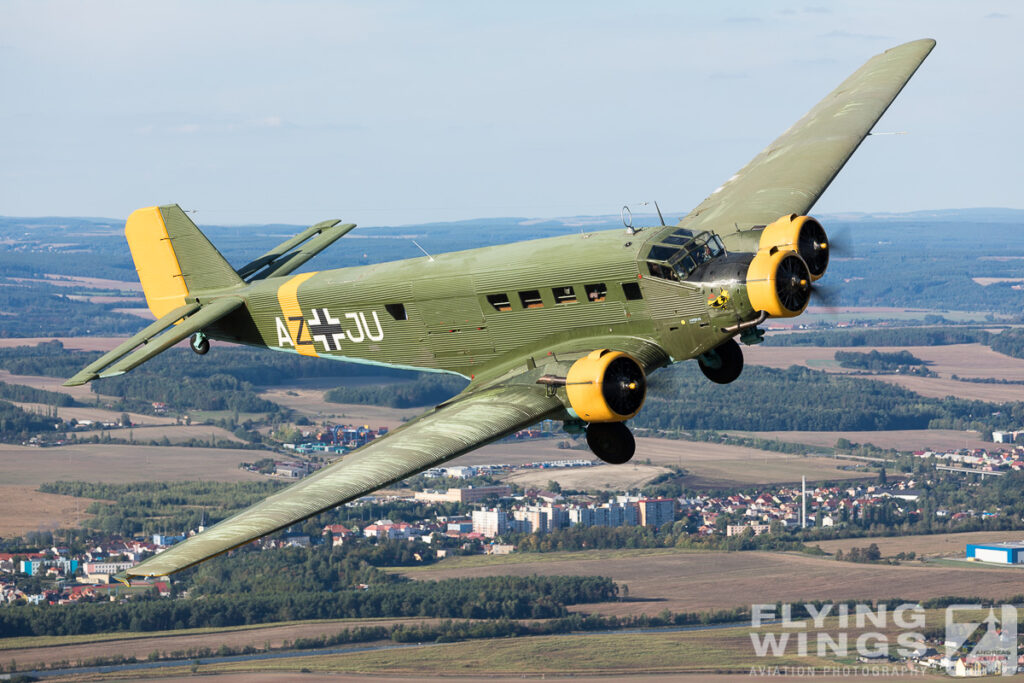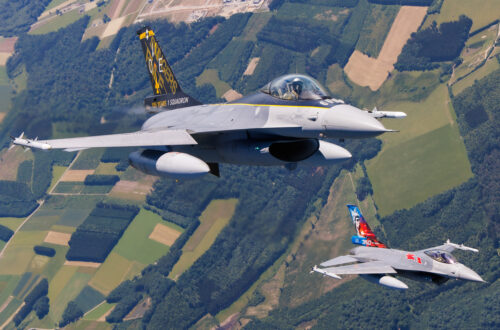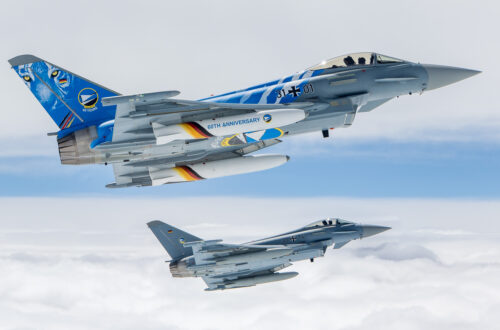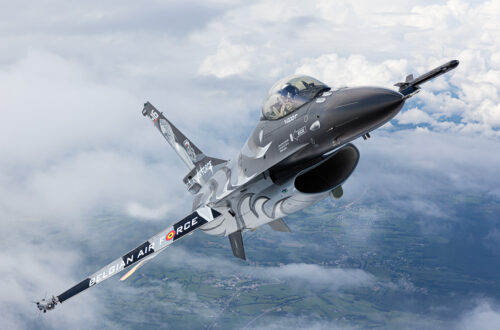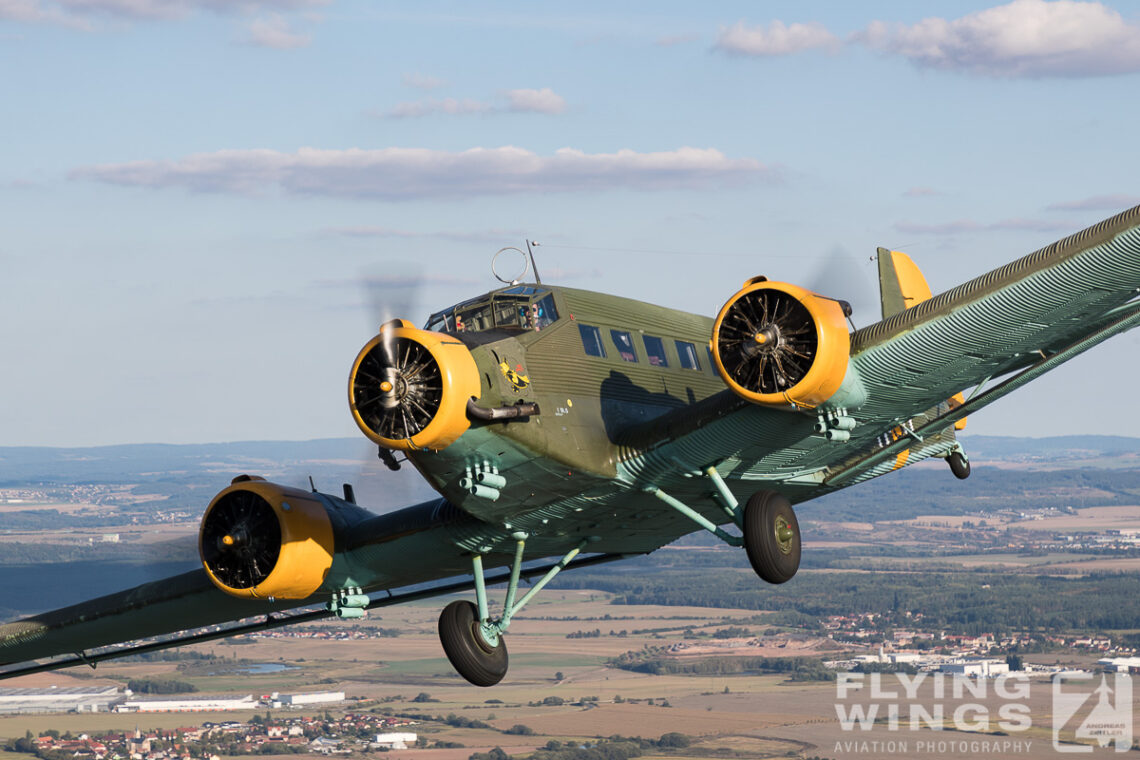
F-AZJU – La Ferté-Alais’ Ju-52/3m
The Junkers Ju-52 is an aviation legend, and “F-AZJU” is a true piece of jewelry for the French Amicale Jean Baptiste Salis. The aircraft is based at the Amicale’s homebase La Ferté-Alais in the South of Paris. This ‚Tante Ju‘ is the biggest aircraft in the collection of the AJBS, and currently also Europe’s sole airworthy Junkers Ju-52.
Where? in flight, Czech Republic
When? September 2018
A German fuselage, Spanish wings and the French “Tricolore” flag preceding the French registration „F-AZJU “make the Junkers Ju-52 of the Amicale Jean Baptiste Salis (AJBS) indeed a truly European aircraft. Contrary to other, more modern equipped machines of the same type, in which passenger flights have been offered until very recently, this Junkers has a much more basic attire. It comes along with a simple interior and the folding seats in the cabin convey the ambiance of the original troop transporting aircraft from the 1940’s.
The aircraft is in very high demand, because this type became quite rare in the meantime.
Originally the aircraft was in service with the Spanish Air Force, where it was wearing the registration T.2B-212 and was used for parachutists training until well into the 1970s. It then moved to a film production in England, before the AJBS acquired it in the 1990s.
Discovering its German Origin
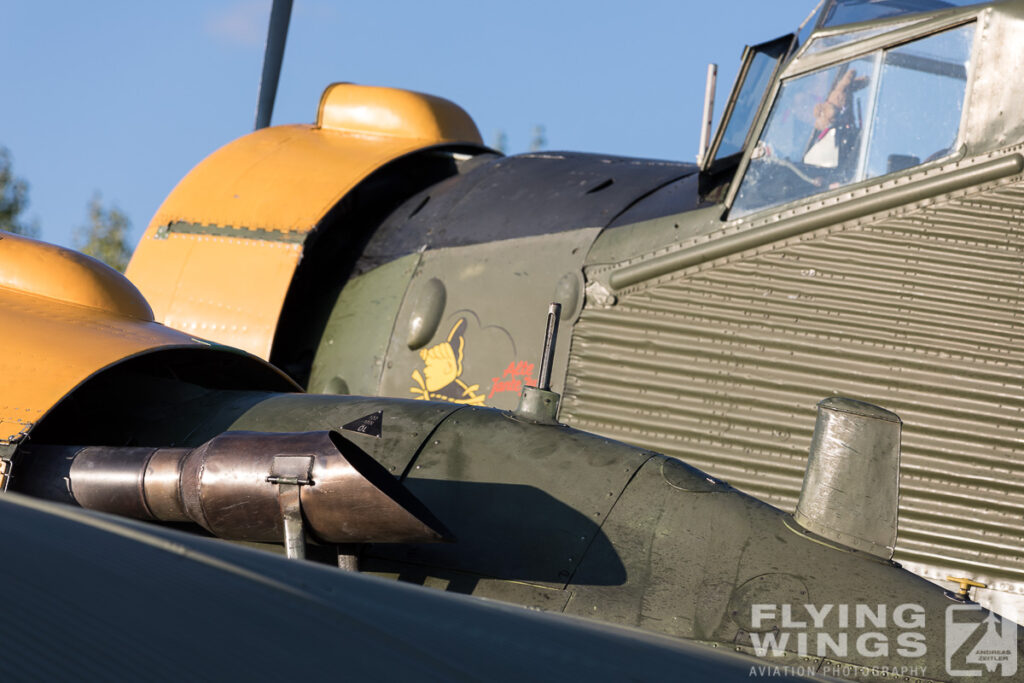
During the disassembly of the aircraft a surprise was revealed. In the main fuselage, which was due to its long use with the Spanish Air Force considered as a Spanish license-build version “CASA 352L” of the German Junkers Ju 52/3m (3m standing for “3 Motoren” – three engines), a German identification plate was discovered. It wore the construction number 24 and 1943 as the year of construction. Its history had to be re-written!
This „Tante Ju“ was not one of the 170 Spanish-built aircraft, but could be considered having a German origin. The fuselage was part of the batch of 30 planes that were supplied by Germany to support the ramp up of the license production at the Spanish Construcciones Aeronáuticas S.A. (CASA) at Getafe in the South West of Madrid. The mated wings though were of Spanish origin, as were the three ENMASA (Empresa Nacional de Motores de Aviación – National aviation engine company) BETA B-4 engines.
Due to its German origin there was no discussion for the new owners that their „Tante Ju“ was again going to receive a former Luftwaffe scheme and markings at the end of the restoration of this plane. Or you might also call it reconstruction.
More than 25.000 working hours of volunteers from the Amicale and other supporting parties and companies have flown into the reconstruction of this Ju 52. The whole effort lasted for 13 years. A main issue during this time was not only to keep the spirit of the team high and alive, but also to get the financial means to keep this demanding project running. The AJBS was thankfully supported generously by the General Council of the Essonne department, and also EADS (nowadays Airbus) as the parent company of CASA and strongly enrooted in France and Germany as well, engaged itself strongly. Also the „Museo del Aire“ in Madrid contributed apart from urgently needed documentation also replacement parts they had on stock and that were suitable to be put into an to-become-airworthy aircraft. During the restoration process the main fuselage as well as the wings were completely stripped from their paint.
May 23rd 2005 was an important date in the CV of this “Tante Ju”. It was the day when the aircraft received its certification from the French civil aviation authorities (Direction générale de l’Aviation civile – DGAC), wearing the fitting French registration „F-AZJU“ that had already been registered by the AJBS in May 2003. And with its S/N 24 and a construction year 1943 it was even put in the register as a German Junkers JU52/3M-4, a fact of which one is particularly proud at the AJBS. Regarding this history the only trade-off seems to be the lack of original BMW 132 A engine with 660PS, but instead the “Junkers” is powered three Spanish Elizalde, later ENMASA (Empresa Nacional de Motores de Aviación) BETA B-4 air-cooled nine-cylinder radial engines. They represent a copy of the American Wright R-1820 Cyclone and offer with 750PS per engine noticeably more power than the original setup.
„We have also restored the engines and brought them to a state as if they have been running for 0 hours. So we should be able to fly again for at least 600 flying hours with them“, Robert Roger, who has been the driving force behind this extensive project, describes the work on the radial engines.
For the first training courses on this new type, pilots of the AJBS received support by the Lufthansa crews that accumulated lots of flying experience with their Ju-52 „D-AQUI“ and who could also provide the background of professional civil aviation pilots. They did not only adapt the flight manuals for this type, but also performed the acceptance flights for the La Ferté-Alais crews.
Managing Crew Workload
For the selection of their Junkers-pilots the AJBS puts a strong focus on the fact that they possess experience as an airline pilot. This is not so much for the amount of accumulated flying hours, but more to the fact that they have to be used to the operating procedures in a real crew environment.
„We have the „Commandant de Bord“ sitting on the left seat in the cockpit, the co-pilot on the right, and for the Junkers there is also the flight engineer, who usually knees behind the pilots“, describes Jean Claude Faure, one of the AJBS Ju 52 pilots, the flying crew. And he continues with a simple example that visualizes that the Junkers cannot be flown by one person alone: „At times the pilot needs his two hands on the ‚steering wheel‘ for the flight controls, and the copilot has to support him due to large control forces. The flight engineer then has to take care of the three levers for the power settings of the engines, which he is getting called by the pilot and has to read back.“
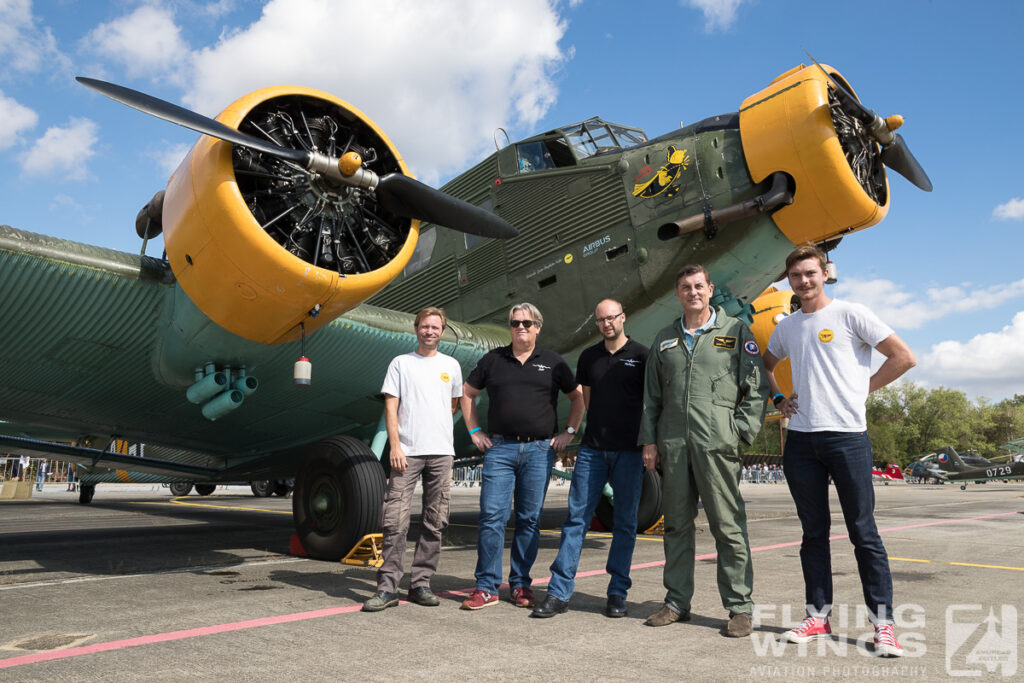
Another one of the currently four qualified pilots for the French „Tante Ju“ is Christophe Bailly. After a career with the Armée de l’Air (French Air Force), where he flew amongst others jets like the Mirage III, Mirage F.1 or the Jaguar, he changed in 1995 into flying business jets. After that he joined the French airline Corsair and became pilot on their long-haul fleet, namely flying the Boeing B747 and Airbus A330. To fly the Junkers Ju-52 he is qualified for about 10 years now. „The initial training corresponds to the usual type conversion on another civil aircraft with studying the manuals, tests, and training flights“, Bailly describes the first step of this procedure, „and afterwards follow the essential acceptance flights which are accompanied by an inspector of the civil aviation authorities”.
Each of the Junkers pilots of the AJBS flies between five to about 20 hours per year, depending on his time and the attendance of airshows. „The aircraft is in very high demand, because this type became quite rare in the meantime. Particularly from Germany we get many inquiries for airshows attendances coming in. In some years it is only two or three, but in other years also up to six or seven. We then have to decide where we can participate or not“, explains Bailly and reminds of the high maintenance effort, which is a factor of five to six per flying hour. This already sets some gaps for the season planning, and does not include major maintenance efforts that are mainly done during the winter season. Additionally to the airshow appearances, the Ju 52 in its German colors is also requested for movie productions. Summarizing all of its flying activities the F-AZJU accumulates approximately 60 flying hours per year.
Keeping Flying History Alive
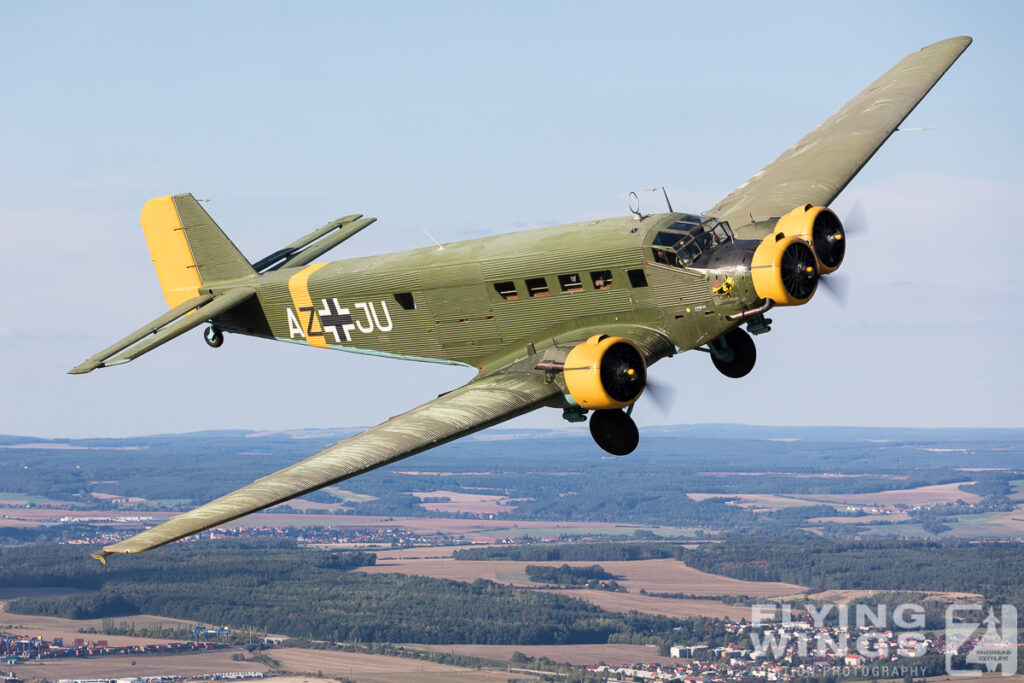
This is obviously noticeably less than its European sisterhips, which have been used by the German Lufthansa and the Swiss Ju-Air for passenger flights. But contrary to these two companies the Ju 52 of the AJBS is considered in France as an „avion de collection“, which refers to an historical aircraft as part of a collection. This eases in some parts the operation of this aircraft, but also limits it in some ways. Particular restrictions are the interdiction to fly paying passengers, or the clearance for flights only under visual meteorological conditions (VMC).
Apart from the pride and joy of flying this rare aircraft, the pilots are also sharing one opinion: „The flying is the pleasant part at this aircraft, but if someone really earns the praise regarding this machine, then it is our mechanics. They are all volunteers, and they work like crazy! There is always something to do, the work just does not stop for servicing and maintenance“. This happens before and after every flight for the regular checks, and in more detail during the larger service intervals, which usually take place in the winter months. Just recently the Junkers underwent a bigger service interval and the AJBS also inspected the wings thoroughly.
After an additional year-long interruption of public appearances due to the pandemic, it is now ready to again participate in the European airshow circuit. Currently being the sole airworthy aircraft of this type it became even more precious, and I am wishing the AJBS all the best in their efforts to preserve this beauty!
Sincere thanks go out to each and everyone of the AJBS being involved with the Ju-52 for their strong support in compiling this article, providing input to the report and granting permission for the photo flight!
Junkers Ju-52/3m F-AZJU Air-Air Photo Gallery
Air-air photos have been taken around the airshow at Pilsen Line, with kind support by Classic Trainers Pilsen Line.
Sources used: http://www.ajbs.fr/avion/le-junkers-ju52-3m/



